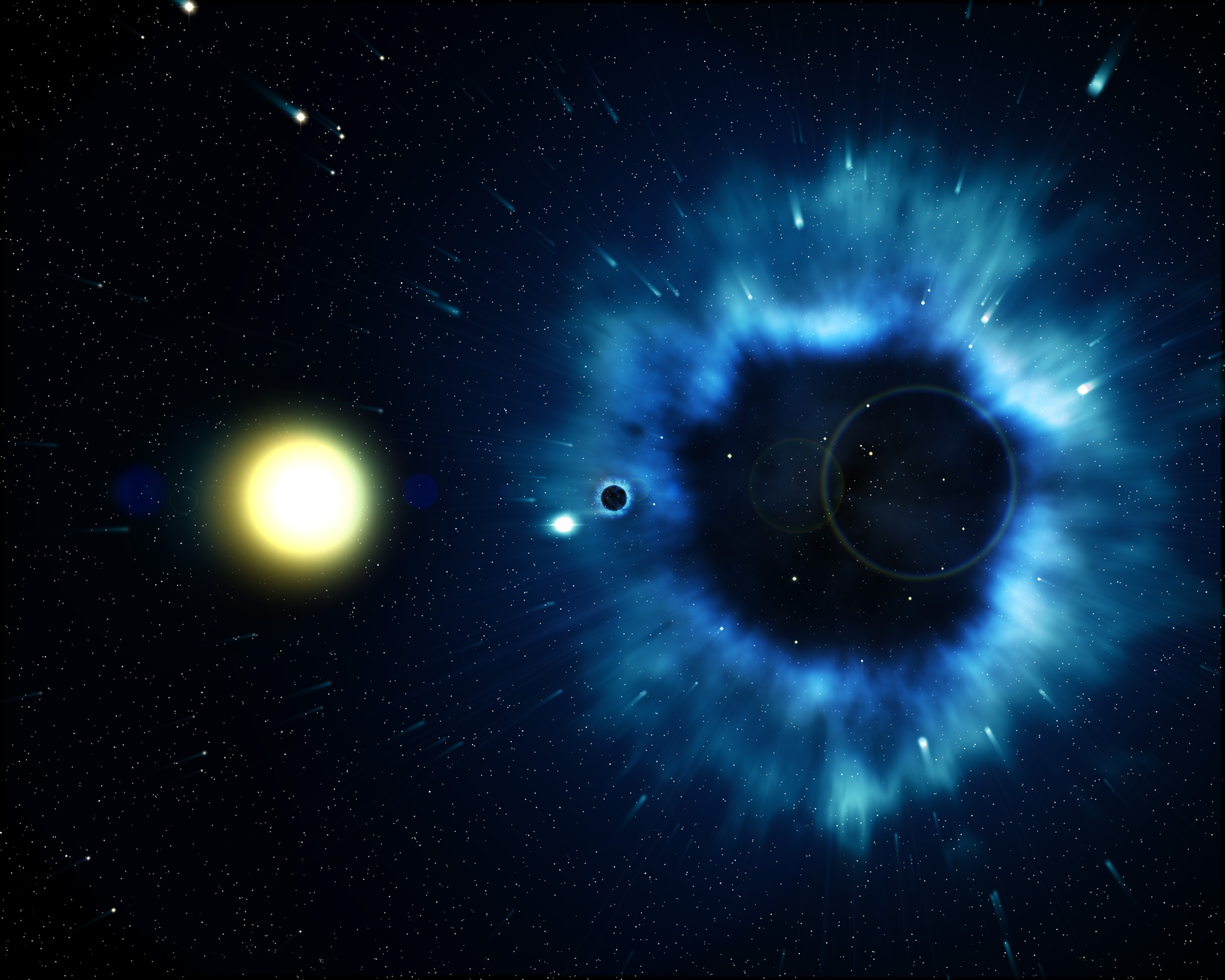Black Holes
Black Holes
Black holes are the strangest objects in the Universe. A black hole does not have a surface, like a planet or star. Instead, it is a region of space where matter has collapsed in on itself. This catastrophic collapse results in a huge amount of mass being concentrated in an incredibly small area. The gravitational pull of this region is so great that nothing can escape – not even light.
Although black holes cannot be seen, we know they exist from the way they affect nearby dust, stars and galaxies. Many of them are surrounded by discs of material. As the discs swirl around them like a whirlpool, they become extremely hot and give off X-rays.
Black holes come in many different sizes. Many of them are only a few times more massive than the Sun. These 'stellar-mass' black holes form when a heavyweight star, about 10 times heavier than the Sun, ends its life in a supernova explosion. What is left of the star – still several solar masses - collapses into an area only a few kilometres across.
Most galaxies, including the Milky Way, have supermassive black holes at their centres. These may be millions or billions of times heavier than our Sun. Supermassive black holes also power active galaxies and ancient galaxies known as quasars. Quasars may be hundreds of times brighter than even the largest ordinary galaxies.
Objects that fall into black holes are literally stretched to breaking point. An astronaut who ventured too close and was sucked into a black hole would be pulled apart by the overpowering gravity.
Last modified 14 June 2016
Story of the Universe
Black Holes
![]() Reviewed by GKE
on
September 15, 2019
Rating:
Reviewed by GKE
on
September 15, 2019
Rating:






No comments: